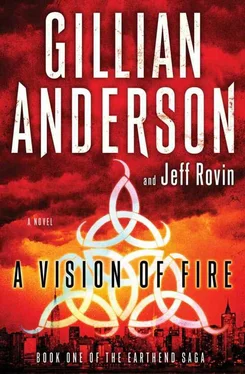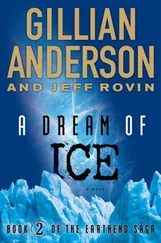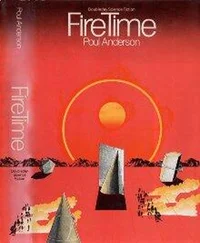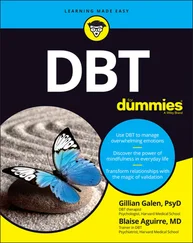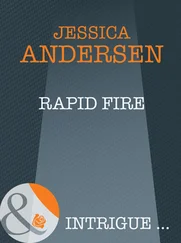Arni Haugan had not noticed any of that. He had been working in the basement of his chaotic chemistry lab for fourteen hours straight, since just before dawn, when Mikel had arrived with the artifact. The Group’s leading field agent had been delayed in Montevideo due to something about an albatross rookery and problems with the electronics of the private jet.
“You’re getting as sensitive as people,” the Caltech wunderkind muttered at his tablet as he waited for the results of a capillary electrophoresis test. Arni loved his tools; he just didn’t always appreciate their temperament.
Like now. The computer insisted there was a problem with the current being carried by the borate ions, and the homogeneous electric field was unstable. Which meant there was a problem with the electrophoresis setup, the software, or both.
He grunted. It was time to stop. He would start fresh in the morning.
Arni shut the tablet and pushed back from the table with his usual cocktail of relief and frustration. Work was never done but it felt good to lay it aside for a while. He needed to plug back into the real world. The air in the Group’s basement was rigorously filtered and purified as part of Flora Davies’s war on dust—the “silent, corrosive killer of relics,” as she described it—leaving the atmosphere with an almost electric perfume.
Arni was a synesthete, having always experienced one sense accompanied by another, especially colors with odors and sounds. The kids in elementary school used to call him “Nutso” because he used his Crayolas to illustrate what he smelled, heard, and tasted. This produced rhapsodic little works of art that no one understood but everyone responded to. His mother had always said that he should become an artist. She was one of the few parents, he suspected, who had ever regretted that her son elected, instead, to become a PhD.
Flora had found his synesthesia fascinating and potentially useful. He was convinced that this, not his strong but less-than-brilliant postgrad record, had scored him this job.
That, plus the fact that she needed someone willing to work in the opposite of an ivory tower , he thought. A scientific wine cellar.
The smell down here registered in his peripheral vision as straight, metallic, bright yellow lines. They didn’t impede his work and didn’t bother him until he’d put in over eight hours. Then they became constricting, like neon prison bars.
Arni had turned on a jazz playlist from his iPod to add a thin purple nebula to the yellow lines haunting his vision. Now he unplugged it, sending the basement into sepulchral silence. There had once been a pendulum clock rescued from a decommissioned train terminal, but when that died, Flora replaced it with a silent red display on the wall, like the countdown clock at Cape Canaveral.
Arni stretched, reviewing what his day’s work had produced: little more than confirmation of what they already knew. He had shaved a slice of rock from one unmarked corner of the card-sized stone and hunkered over it with the light microscope to affirm that, yes, as the weight and location had suggested, it was a pallasite meteorite with a nickel-iron matrix and olivine crystals, and a bit of chromite as well. He had dug out a minuscule sample of the substance inside the carvings and run chemical tests, affirming that no, they still had no idea what kind of tool had made them. There was no trace of non-indigenous stone or metal, no hint of thread from a cloth or fur from a pelt that may have been used to smooth it. Arni admitted to himself that a dull familiarity had set in when he compared this object with the others in the Group’s collection. Whether in stone or metal or clay or eroded alabaster or even rotted wood, the carvings were all alike in terms of relative size and depth. The only thing that altered between them was the arrangement of carvings.
Still wearing his latex gloves, he stowed the object in a large safe with the other eight objects.
“ Cras dies novus est ,” he said, quoting one of Flora’s favorite Latin expressions. “Tomorrow is a new day.” It always put an unapologetic, unbeaten cap on the day.
Arni flicked off the light. Just one stop in the locker room and he would be out of this sharp air and onto a nice, pungent uptown bus.
He e-mailed his friend Bewan to tell him he was on the way. Hanging up his lab coat, he pulled a new white button-down shirt from his locker. He was tired, but tired was the best way to enjoy Uranium, a throwback to the 1980s with disco music and black lights to make its cocktails glow. The sounds and tastes would become colors, unimpeded, and he’d finally relax.
Arni started to close his locker door and then stopped, going still.
The electronics. In the plane. In the lab.
A bloody meteorite !
Of all the tests they’d tried on the carved objects, they’d never checked to see if the objects were radioactive. There was no reason to. Everyone knew that pallasite meteorites weren’t radioactive—not enough to speak of. But “everyone knew” were words of death in scientific research. It wouldn’t take more than a minute to grab a Geiger counter and wave the wand over the object.
Arni opted not to change clothes again. He returned to the lab, flicked on the lights, and found one of the Group’s Geiger counters. He retrieved the meteorite and placed it on the worktable, then waved the Geiger wand in front of it. The count of ionizing events—evidence of radioactivity—was almost nonexistent. The Geiger produced a couple dull clicks at a limping, almost dead pace, generating one or two light brown spots in the corners of Arni’s vision. Nothing to get excited about.
Arni heard a ring. Damn. His phone back in the locker room. No matter. It was probably Bewan saying he would meet him at the club, was already in line. Arni had to hurry. He gave the wand one last sweep. Suddenly, brown drops began pattering in Arni’s vision like rain. He heard dull clicks at a rapid pace. The Geiger counter’s needle was beginning to twitch toward the right of the gauge—even though that was impossible. An object couldn’t suddenly develop radioactivity.
Then his synesthesia created a thin gray fog with black edges in his peripheral vision.
“Okay—that’s just crazy,” he said.
The gray fog was his unvarying response to recorded spoken voices, not the clicks that emanated from the Geiger counter.
“No,” he said out loud. These aren’t clicks coming from the machine.
They were dull, soft voices… coming from the stone ? He moved closer, bent lower. There was no doubt about it. They were like voices on the wind—the chanting of angels came to mind. Arni practiced no religion nor believed in supernatural beings, but there the voices were.
He drew a sharp breath as the carvings began to pulse, not with his synesthetic lights but with an internal luminescence, ivory-white. The symbols were lighting up in a nonlinear order, each carving showing a soft visual pulse with every corresponding sound. The tones themselves were fractionally louder now. They reminded Arni of language tapes, native pronunciation slowed for the novice, but he immediately squashed that thought. The human propensity for personification meant that any unidentified sound resembling vocalization would automatically be interpreted as words and language. That was wishful, not scientific. He felt in his pocket for his phone. He had to record this—
His phone was in his locker. He reached over and rebooted his tablet. There was an audio recorder built in.
While it turned back on, Arni picked up the meteorite and turned it over, trying to see if there was a point of origin for the hum. He discovered that the stone was vibrating, but not in a way that could be producing the tone. The buzz was more like a mild electric current than a cell phone. It was not unpleasant to the touch; it was soothing, in fact. It made him want to hold it. The current seemed to magnify inside his body, as though triggering his own energy centers—the top of his skull, his forehead, his throat, his heart—
Читать дальше
